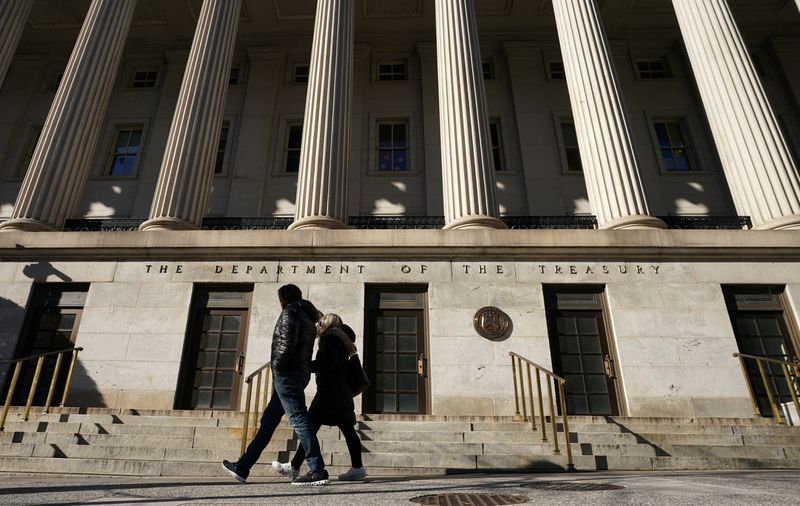By Karen Brettell
NEW YORK (Reuters) - The Treasury Department may offer fresh guidance on expected increases in its 2025 debt auctions when it announces its updated refunding plans this week, though uncertainty over the Nov. 5 U.S. elections likely means any details will be minimal.
The U.S. government will issue overall borrowing estimates for the coming two quarters on Monday and provide more details on its auction sizes for the next quarter on Wednesday morning.
The Treasury is not expected to change the sizes of its coupon-bearing auctions, following large increases from August 2023 to April 2024.
“I don't think there should be any big surprises,” said Padhraic Garvey, regional head of research, Americas at ING. “What we're looking at here is the maintenance of really elevated issuance numbers.”
Analysts see the current auction schedule as likely keeping the Treasury well-funded through at least the second half of 2025, however this could change under a new government.
“People are going to be watching for the initial estimate for marketable borrowing in Q1 as well as any changes to the language around whether or not the Treasury Department anticipates needing to bump up auction sizes over at least the next several quarters,” said Vail Hartman, U.S. rates strategist at BMO Capital Markets.
The fiscal outlook is expected to worsen under the policies of Republican presidential candidate Donald Trump or Democratic candidate Kamala Harris, and details will depend on whether either party controls Congress.
The government is likely to increase the size of its Treasury Inflation-Protected Securities debt to keep TIPS issues in proportion with its overall debt issuance.
The Treasury is expected to rely on short-term Treasury bills to adapt to shifts in borrowing needs in the near term.
Traders will also watch for any discussion of the debt ceiling, which could dampen debt issuance once it is reinstated at the beginning of the year. Analysts expect the government will be able to operate until at least mid-2025 before risking a debt default.
The end of the Federal Reserve’s quantitative-tightening program, which is expected in early-to-mid 2025, should offset some pressure from the widening budget deficit.

This program has reduced the Fed's bond purchases by allowing bonds to roll off its balance sheet without replacement. After the pandemic, the Fed's balance sheet ballooned to around $9 trillion as it bought bonds to stabilize the financial system.
The Treasury is also likely to continue its Treasury buyback program and traders will be on alert for any changes to the sizes of the repurchases. In this program, the government buys back up to $30 billion in bonds per quarter for liquidity purposes, in addition to cash-management buybacks.